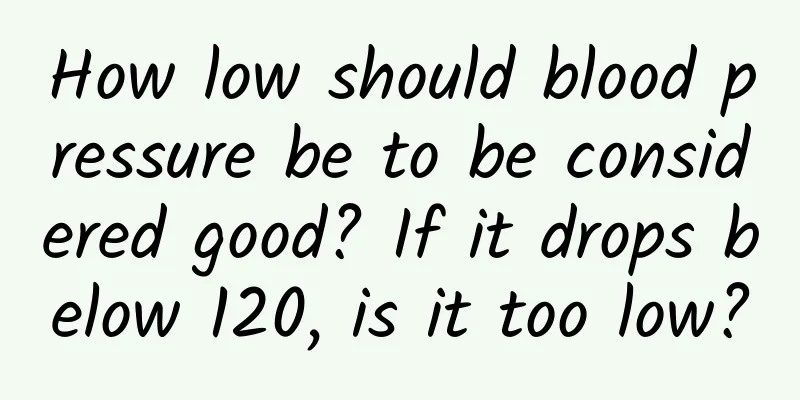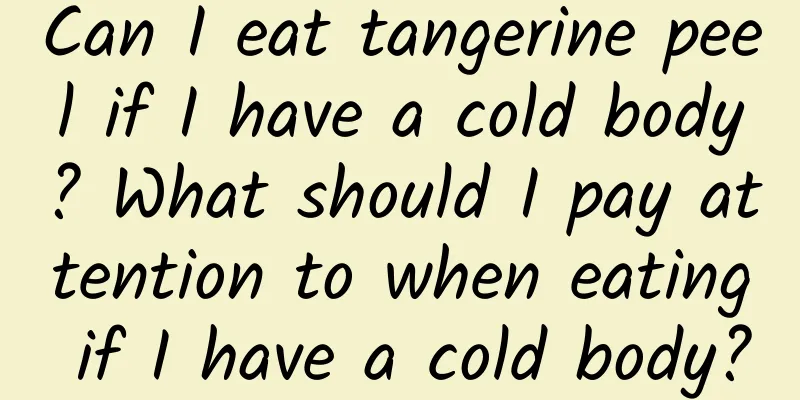How low should blood pressure be to be considered good? If it drops below 120, is it too low?

|
A friend with high blood pressure told Huazi that he had suffered from cerebral infarction before and then cerebral hemorrhage. He now takes antihypertensive drugs and his blood pressure is controlled between 110 and 120 mmHg. But he is worried that if his blood pressure drops below 120 mmHg, it is too low and will induce cerebral infarction? But his blood pressure is too high and he is afraid that cerebral hemorrhage will recur, so he is in a dilemma. Huazi told him not to worry, because 120mmHg is actually the upper limit of normal blood pressure. Although we usually say that patients with hypertension should control their blood pressure below 140/90mmHg or 130/80mmHg, in fact, lower blood pressure is better for protecting the cardiovascular and cerebrovascular system. 1. Normal blood pressure and hypertension in the human body The ideal blood pressure for the human body is between 90 and 120 mmHg for the high pressure and between 60 and 80 mmHg for the low pressure. When the blood pressure is between 120 and 139/80 and 89 mmHg, it is considered high normal blood pressure. The standard for hypertension in my country refers to blood pressure reaching or exceeding 140/90 mmHg. Blood pressure between 140~159/90~99 mmHg is considered grade one hypertension, and blood pressure exceeding 160/100 mmHg is considered grade two hypertension. If the blood pressure is lower than 90/60 mmHg, it is considered low blood pressure. Whether the blood pressure is too high or too low, it will affect your health. For most adults, the best blood pressure is around 120/70 mmHg. 2. Lower blood pressure within a safe range is better When blood pressure is lower than 90/60 mmHg, the human body is prone to shock, causing blood supply obstruction to important organs such as the heart, brain, and kidneys. Therefore, for people with high blood pressure, the lower the blood pressure, the better. When controlling blood pressure, a "safety lower limit" is set, usually the high pressure is not less than 110mmHg, and the low pressure is not less than 60mmHg. However, when elderly people are receiving antihypertensive treatment, the low pressure lower limit can be appropriately relaxed to 50mmHg. During the blood pressure lowering process, pay attention to whether there is dizziness, palpitations, black vision or other symptoms of insufficient blood supply. The lower the blood pressure, the better the protective effect on the organs, as long as it is not lower than the safe lower limit. 3. Blood pressure reduction targets vary by age When treating hypertension, the age of 65 is usually used as the cutoff, and different blood pressure lowering strategies are adopted for young and old hypertensive patients. Young hypertensive patients have a longer life expectancy, so the requirements for blood pressure control will be more stringent in order to obtain the maximum treatment benefits. The target blood pressure is below 130/80 mmHg. If it can be tolerated, it is recommended to further reduce it to around 120/70 mmHg. Elderly patients with hypertension may have carotid artery stenosis or cerebral artery stenosis. If blood pressure is too low, it may affect the blood supply to the brain. Therefore, the initial blood pressure reduction target is 150/90 mmHg. If there is no insufficient blood supply after two weeks of observation, it can be further reduced to 140/90 mmHg. If it can be tolerated after two weeks of observation, it can be further reduced to 130/80 mmHg, but it is not recommended to go lower. The characteristics of senile hypertension are that the high blood pressure is low, the low blood pressure remains unchanged or decreases, and the low low blood pressure is well tolerated. Therefore, the current international view is to ignore the low blood pressure and only adjust the medication according to the high blood pressure level. However, for safety reasons, it is recommended that the low blood pressure should not be reduced to below 50 mmHg, and close observation should be made during the blood pressure reduction process to see if there are symptoms of insufficient blood supply. 4. Don’t rush to lower blood pressure When starting antihypertensive treatment, it is recommended to take antihypertensive drugs at a low dose. Long-acting dihydropyridines take 7 to 10 days to produce the best antihypertensive effect; pril drugs and sartan drugs take 3 to 6 weeks to produce the best antihypertensive effect. When adjusting medications, it is usually necessary to follow this time interval. Therefore, do not be too hasty in adjusting the dosage of antihypertensive drugs. Most people need to slowly adjust over several months to find the blood pressure range that suits them best. To sum up, when people with high blood pressure control their blood pressure, it is most ideal to control the blood pressure value at 120/70mmHg. For older people, the requirement can be appropriately relaxed. Everyone's situation is different, and individualized blood pressure reduction is required. The selection and adjustment of drugs need to be carried out under the guidance of a doctor. If you have any questions about medication, please consult a doctor or pharmacist. I am pharmacist Huazi, welcome to follow me and share more health knowledge. |
<<: A special gift for Nurses’ Day: Are you eating right during the home quarantine period?
Recommend
How long after abortion will it be normal to have menstruation?
Abortion is a medical method to terminate a woman...
Running is bad for women's uterus
Running can maintain a perfect figure, has a good...
Can pregnant women wear light makeup? Precautions for pregnant women to wear makeup
Pregnant women cannot lie face down for a long ti...
[Medical Q&A] Why do children also suffer from obsessive-compulsive disorder?
Author: Zhang Cheng, Beijing Huilongguan Hospital...
How to treat urinary tract infection during breastfeeding
Due to the special structure of the female body, ...
What to do if the uterine wall prolapses
Today I would like to share with you a topic abou...
What women need most in their life is this "gold"
Everyone loves beauty, especially girls, who purs...
What causes stone women?
What are the actual causes of stone women? With t...
What are the symptoms of uterine disease?
Uterine disease is one of the common diseases amo...
Breast pump causes nipple pain
According to the previous baby formula incident, ...
What time in the morning is the most accurate for testing pregnancy?
There are many ways to test whether you are pregn...
What should I do if my amniotic fluid breaks and my stomach doesn't hurt?
What should I do if my amniotic fluid breaks and ...
What does urology check for women?
The genitourinary system is an important system o...
Cervical ripening test
Cervical maturity examination is one of the inter...
Location map of female lower abdomen
The orientation diagram of the female lower abdom...









